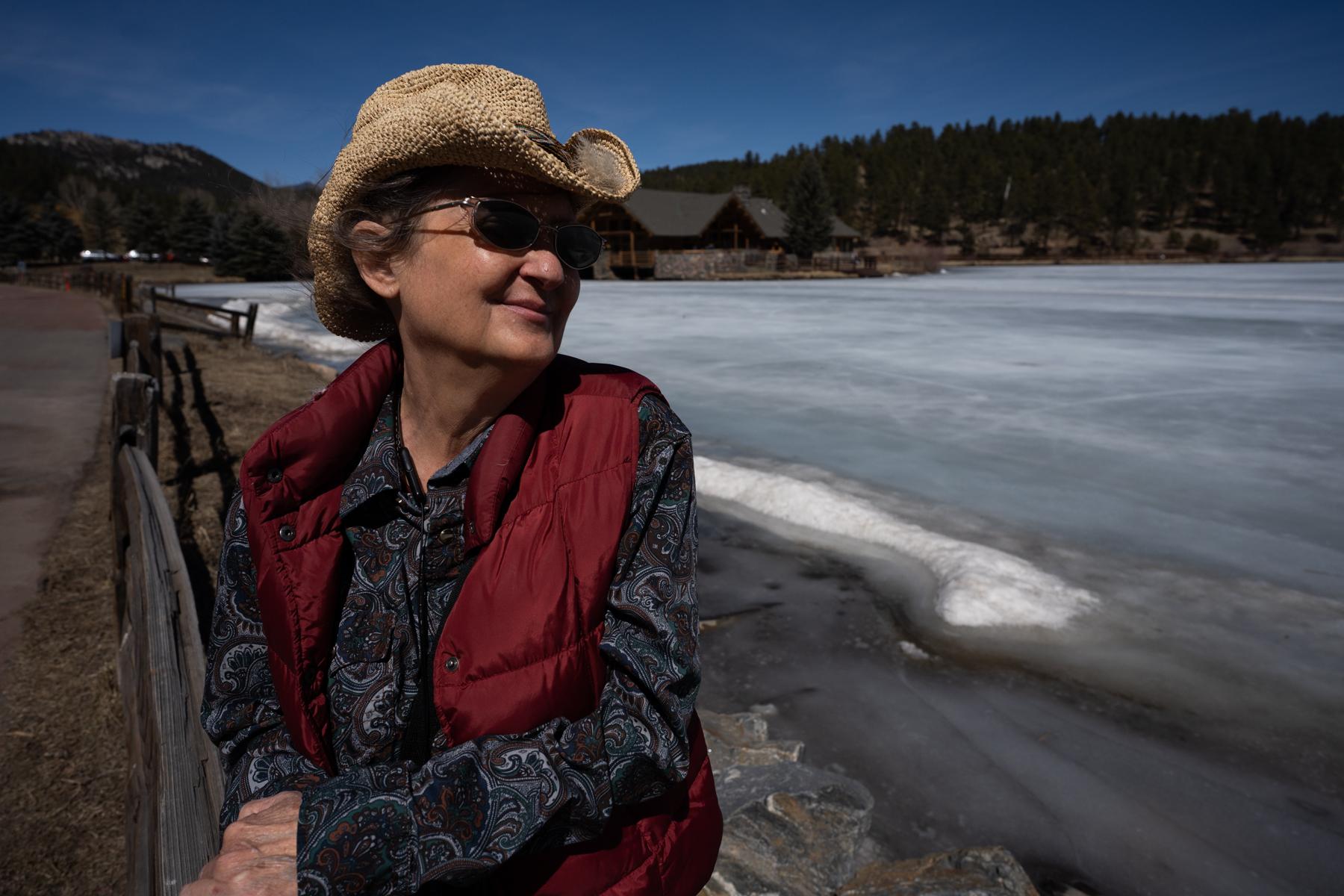
Denver resident Michelle Leonard had a contented smile as she strolled around Evergreen Lake earlier this month. It was her first trip to the mountains in four years.
“The breeze, the space,” she sighed. “It’s nice to be out here.”
Leonard, 61, grew up visiting the mountains west of Denver, hiking with family and camping with Girl Scouts. Later, she’d bring her kids up for excursions too.
But for the last eight years, her ability to get to the high country has been greatly diminished. The reason: Her car was totaled and she couldn’t afford to replace it. (More recently, after learning more about the environmental impact of cars, she doesn’t want to. And her multiple sclerosis makes it difficult to drive too.)
“It’s impermanent,” she said of one’s ability to drive. “I never imagined myself being without a car, so I never thought of what it would be like to not be able to get places.”
Now, she thinks about transportation and accessibility a lot. She relies on Regional Transportation District buses, trains and paratransit vans to move her around the city. CPR News gave her a lift to Dedisse Park in Evergreen for this story.
For recreation at home, she takes frequent walks on the nearby Highline Canal. But she’ll sometimes look west toward the mountains and dream about being in them again. Public transportation to the mountains from the Denver area does exist, but it’s very limited — and difficult to use for some.
So Leonard wrote into CPR News’ Colorado Wonders to ask: Why doesn’t the city provide transportation to its network of mountain parks?
“It could benefit so many people that are unable to drive or can't afford to drive or would rather not drive,” she said.
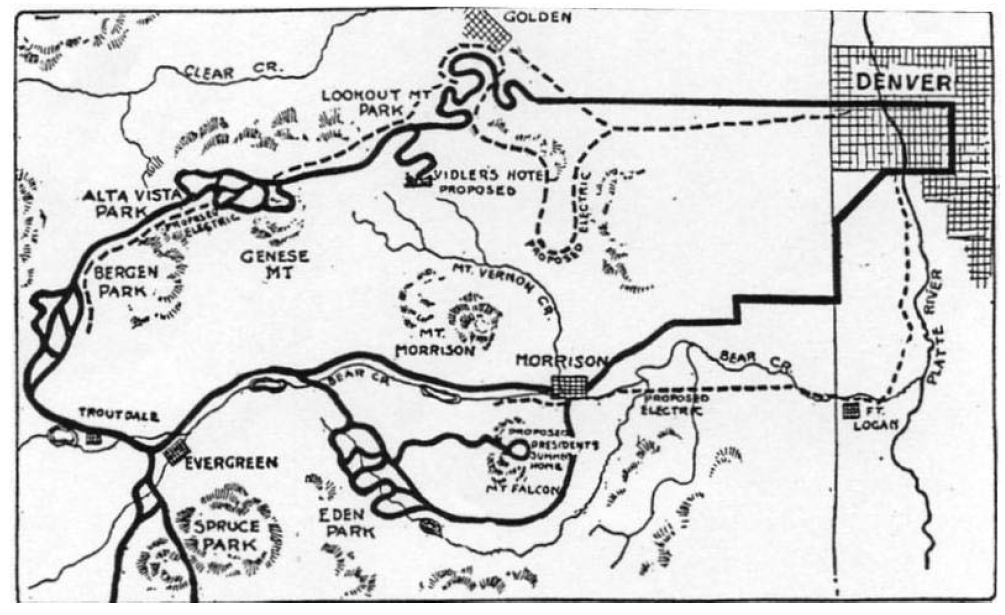
Turns out, people asked a similar question more than a century ago.
Denver voters approved funding for the mountain park system in 1912, at a time when very few of them owned personal vehicles and many were pining to escape the city. The plan presented to voters showed two electric rail lines that would run from Golden to Bergen Park, and part way up Bear Creek Canyon from Morrison.
The first parks opened to wide acclaim just a few years later — but without those promised electric rail lines through the mountains. Back then, the lack of equitable access rankled even wealthy automobile owners.
“The parks were not undertaken for a favored few,” wrote Charles K. Philipps in a Denver Post op-ed in 1914, railing against the high prices of a joint tram ride to Golden and long-lost funicular up Lookout Mountain. “It was felt and understood that everybody should and would have the benefit of the public outlay and of the health and recreation so near our doors, and this not once in a while, but by quick and economic access.”
Another critic wrote in the Colorado Transcript in 1915 that, “Two years of our mountain park taxes have gone in providing a far-back Genesee Park, which only the rich can reach in high powered automobiles.”
Philipps and others urged the city to spend more on affordable public transportation to the mountain parks. That never happened, said Wendy Rex-Atzet, a historian at the Utah Division of State History who wrote her doctoral thesis on the Denver mountain parks.
Her research wasn’t able to uncover the exact reason the transit idea was dropped, but Rex-Atzet hypothesized that it’s connected to the rise of the automotive age. What is clear is that the city continued to prioritize building roads. Parks and cars, for at least a few years, seemed like a “perfect marriage,” Rex-Atzet said.
“It’s all part of this package that is embraced with a lot of hope and faith and really progressive-era idealism,” she said. “Until the realities become obvious and the wear and tear on the landscape, and the loving your parks to death problem that seems so familiar to us.”
In the post-WWII era, as Denver continued to embrace the automobile and dismantle its extensive trolley system, more people drove past the mountain parks as highways improved and went deeper into the mountains. Denver decided to stop collecting tax money dedicated to those parks, and they fell into disrepair.
“Thus began a spiral of decline for the Denver mountain parks,” W. Bart Berger, founder of the Denver Mountain Parks Foundation, wrote in a book on the parks’ history.
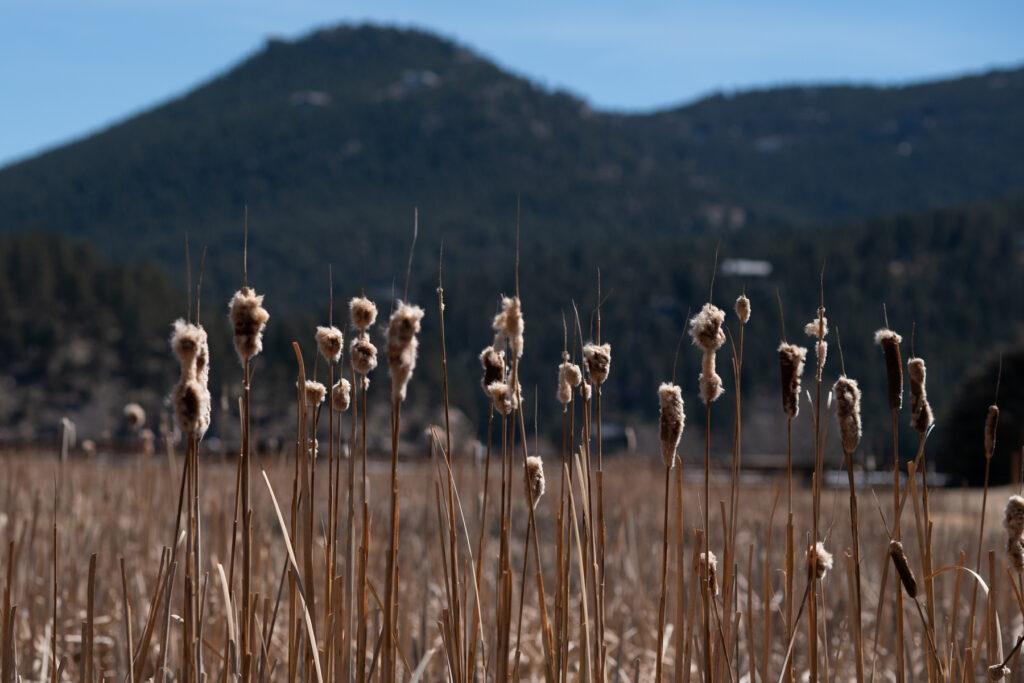
Denver has spruced up its mountain parks in recent decades. But cars are still pretty much the only way to get to them
Denver Parks and Recreation still occasionally runs shuttles from recreation centers to mountain parks for specific activities like group hikes. Asked what would help them the most to get to a mountain park, 22 percent of respondents to a city survey last year said a free or low-cost shuttle. The figure was higher for Black, Asian, and Hispanic respondents.
A recent strategic plan from the city calls for more shuttles — especially from rec centers in “inverted L neighborhoods” – to popular parks including Echo Lake, Genesee and Red Rocks. The city is “exploring partnerships and opportunities,” Denver Parks and Recreation Department spokeswoman Cynthia Karvaski wrote in an email, but she added that there was “no specific information to provide at this time.”
Activity-specific shuttles, whether provided by the city or an educational nonprofit, are probably the most practical short-term solution, Berger said.
“I’ve thought about this a lot, and it doesn’t make me sound very sympathetic, but … I’m not sure that the city has an obligation to take everybody up there,” he said. “I don't disagree that if there were a way to do it in an organized and economically efficient way that the city shouldn't provide it. But I think it has to be combined with programming and the like.”
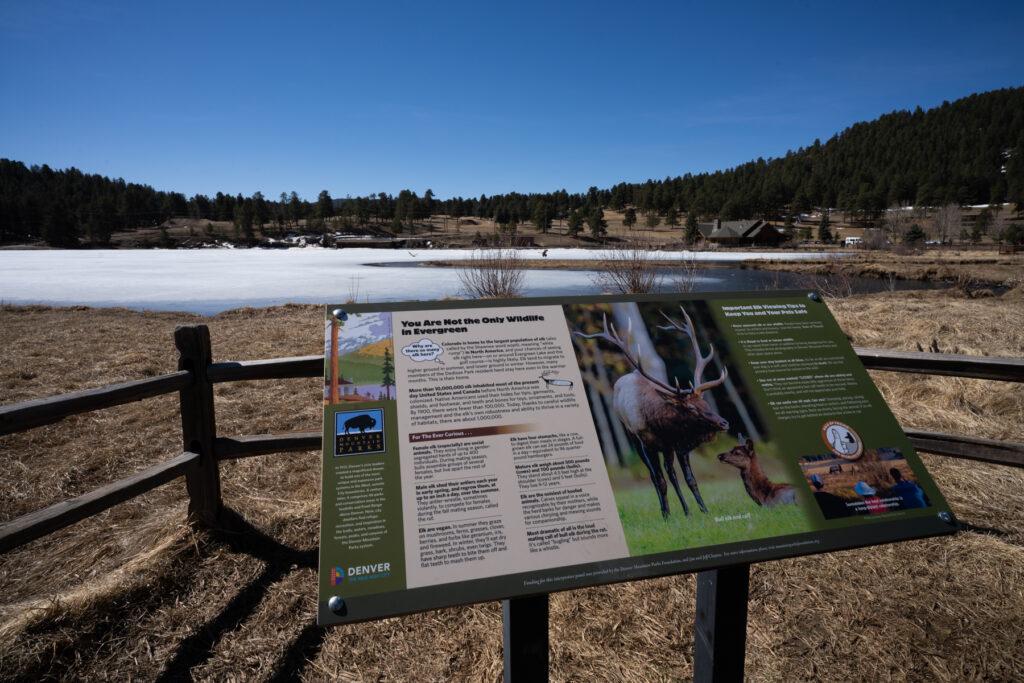
Our question-asker Michelle Leonard said she’s not looking for a guided experience. She just wanted the ability to get on a typical public transportation bus and reach a mountain park on her own time.
“What if I just want to go look at a tree?” she asked.
Regular transit service is very unlikely to happen any time soon. Laurie Huff, an RTD spokeswoman, said the agency hasn’t had any recent external requests for service to any Denver mountain parks. The agency is currently dealing with a driver shortage and has no immediate plans to restore service to pre-pandemic levels, let alone expand it.
So on a recent spring day, Leonard took her time finishing our loop around Evergreen Lake. She paused to listen to the birds, not knowing when she was going to be able to get back.
“Oh it’s peaceful,” she said, in this “place beyond words.”
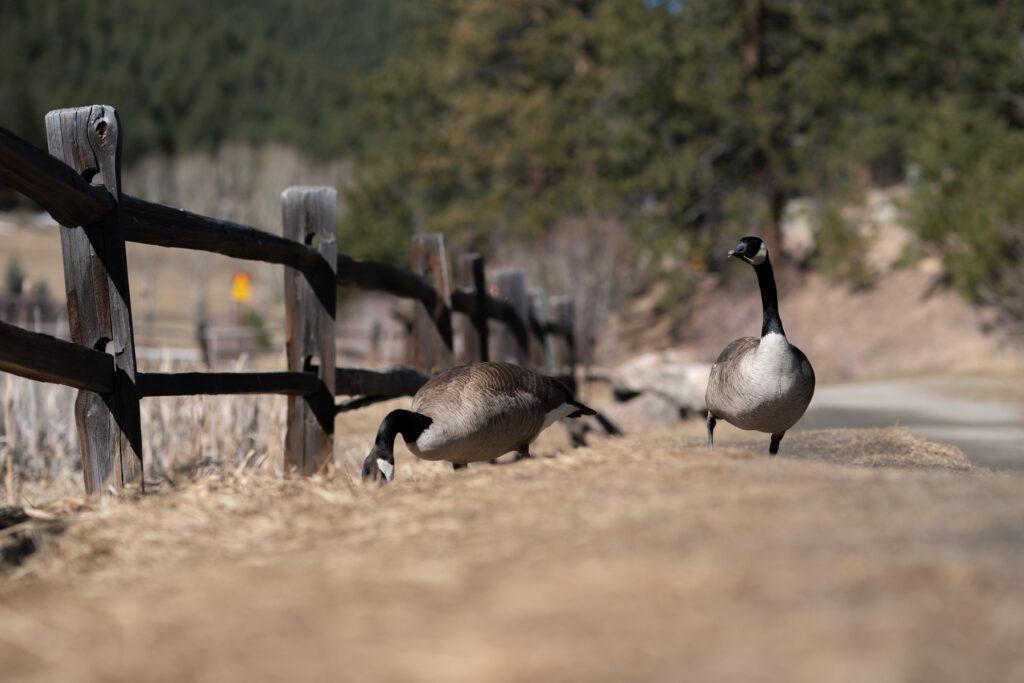
Funding for public media is at stake. Stand up and support what you value today.








